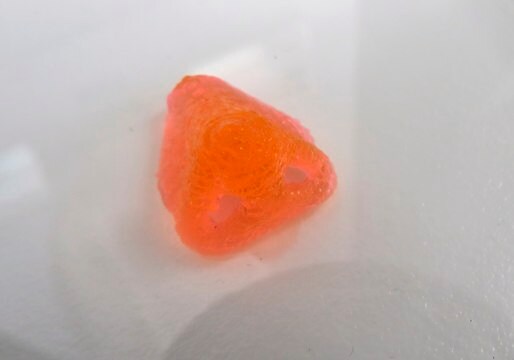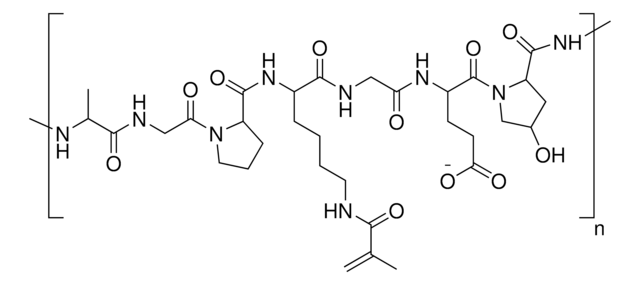927252
TissueFab® bioink
(GelAlgHA)MA Vis/405 nm, low endotoxin
Sinonimo/i:
AlgMA, GelMA, HAMA
About This Item
Prodotti consigliati
Descrizione
HNMR in D2O at 40°C
Livello qualitativo
Stato
(viscous liquid to gel)
Impurezze
<5 CFU/g Bioburden (Fungal)
<5 CFU/g Bioburden (Total Aerobic)
<50 EU/mL Endotoxin
Colore
pale yellow to colorless
pH
6.5-7.5
Viscosità
10-30 cP(37 °C)
Temperatura di conservazione
2-8°C
Cerchi prodotti simili? Visita Guida al confronto tra prodotti
Descrizione generale
3D bioprinting is the printing of biocompatible materials, cells, growth factors, and the other supporting materials necessary to yield functional complex living tissues. Gelatin methacryloyl (GelMA) is a polymerizable hydrogel material derived from natural extracellular matrix (ECM) components. Due to its low cost, abundance, and retention of natural cell binding motifs, gelatin has become a highly sought material for tissue engineering applications. Hyaluronic acid (HA) is a linear polysaccharide of alternating D-glucuronic acid, and N-acetyl-D-glucosamine found in the extracellular matrix. HA is commonly chemically modified to form covalently crosslinked hydrogels. Alginate methacryloyl also known as AlgMA, is a polysaccharide widely used in tissue engineering obtained from brown algae.
Applicazioni
Low Endotoxin, low bioburden: Endotoxins have been demonstrated negatively impact cellular growth, morphology, differentiation, inflammation and protein expression. Bioburden is defined as the number of contaminated organisms found in a given amount of material. We test each lot for endotoxins as well as total bioburden (aerobic and fungal) to minimize unwanted interactions. For more information: https://www.sigmaaldrich.com/US/en/technical-documents/technical-article/microbiological-testing/pyrogen-testing/what-is-endotoxin
Confezionamento
Note legali
Prodotti correlati
Codice della classe di stoccaggio
10 - Combustible liquids
Classe di pericolosità dell'acqua (WGK)
WGK 3
Scegli una delle versioni più recenti:
Certificati d'analisi (COA)
It looks like we've run into a problem, but you can still download Certificates of Analysis from our Documenti section.
Se ti serve aiuto, non esitare a contattarci Servizio Clienti
Possiedi già questo prodotto?
I documenti relativi ai prodotti acquistati recentemente sono disponibili nell’Archivio dei documenti.
Il team dei nostri ricercatori vanta grande esperienza in tutte le aree della ricerca quali Life Science, scienza dei materiali, sintesi chimica, cromatografia, discipline analitiche, ecc..
Contatta l'Assistenza Tecnica.







